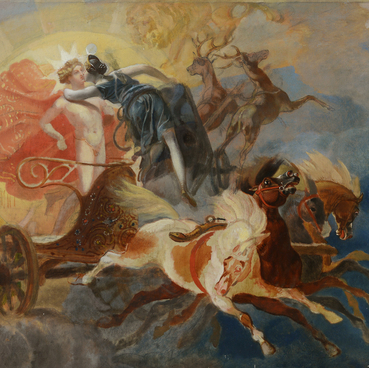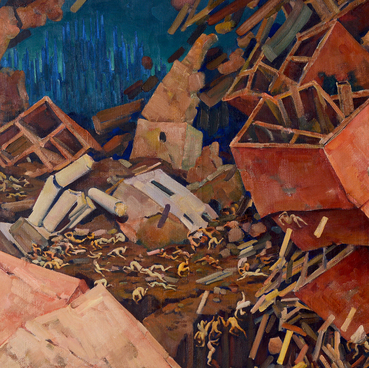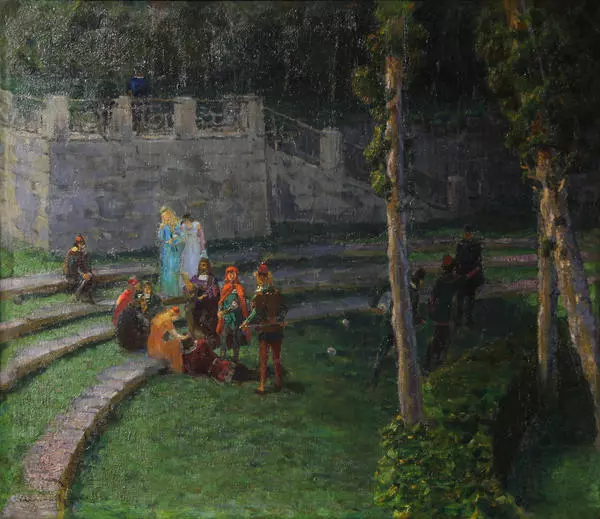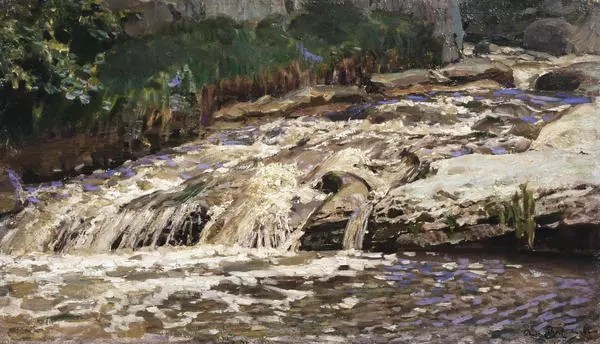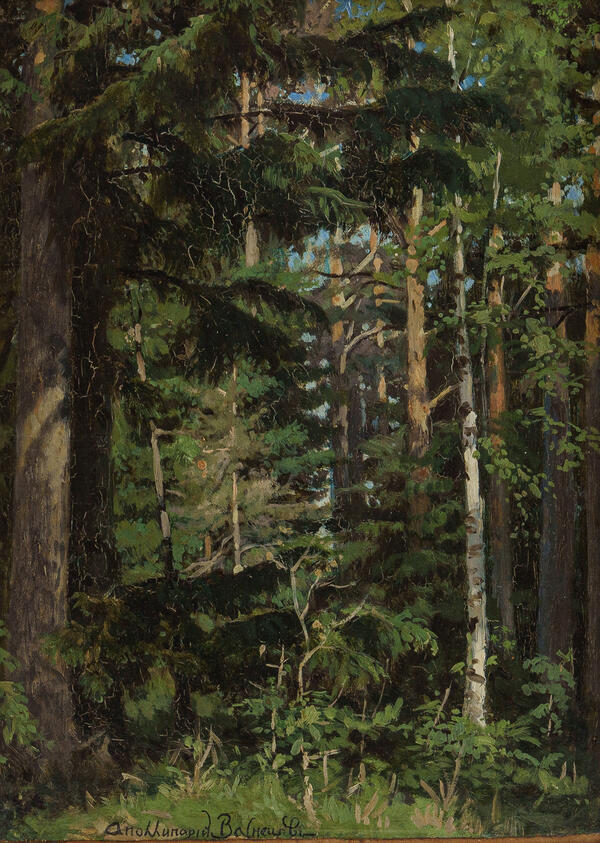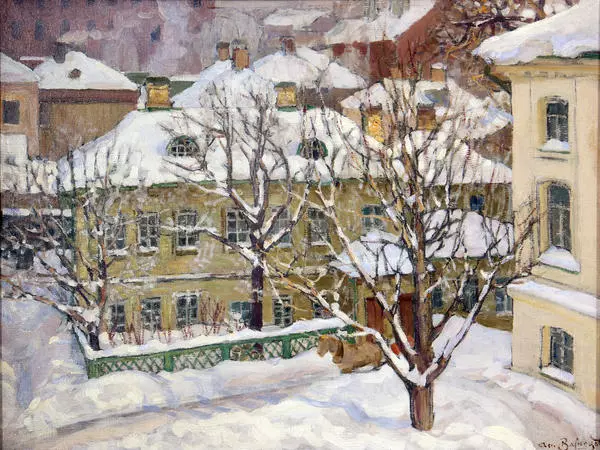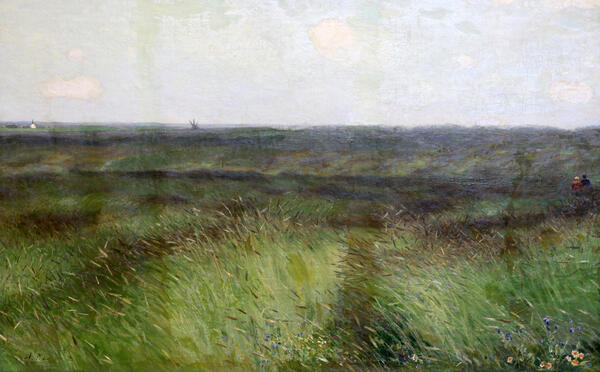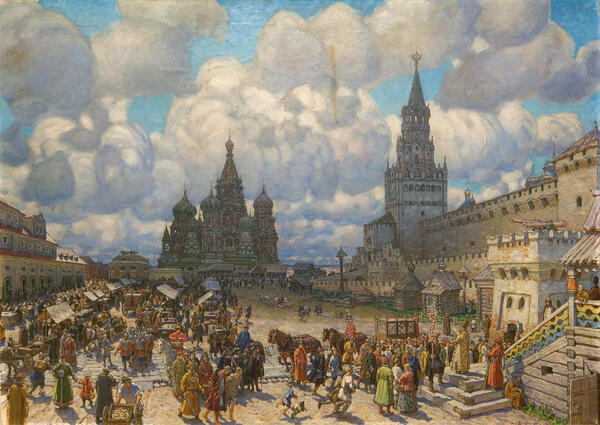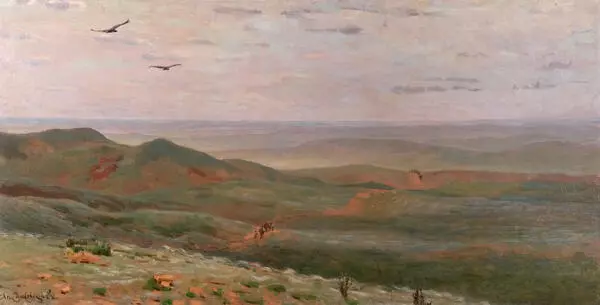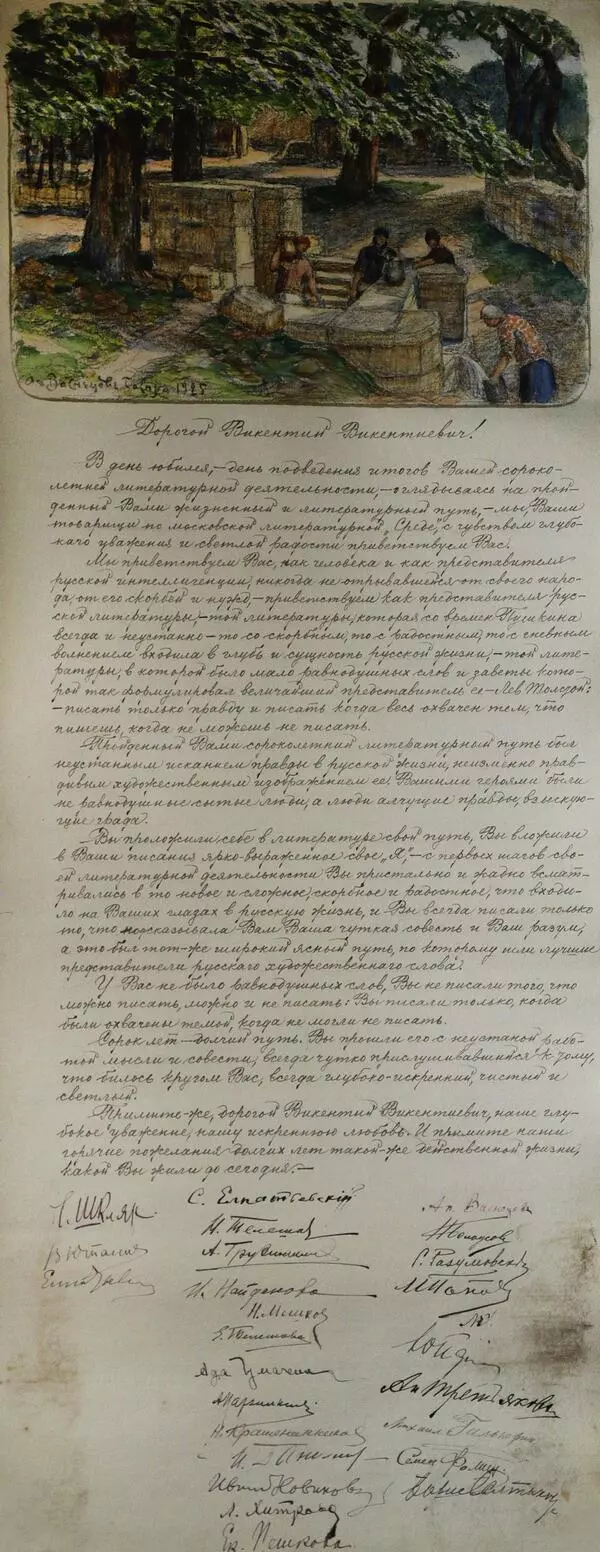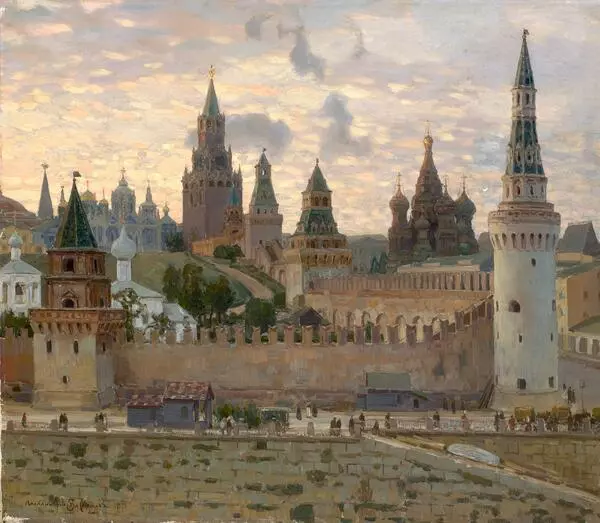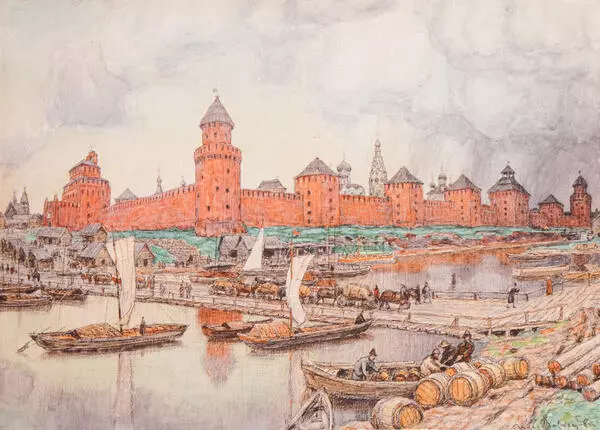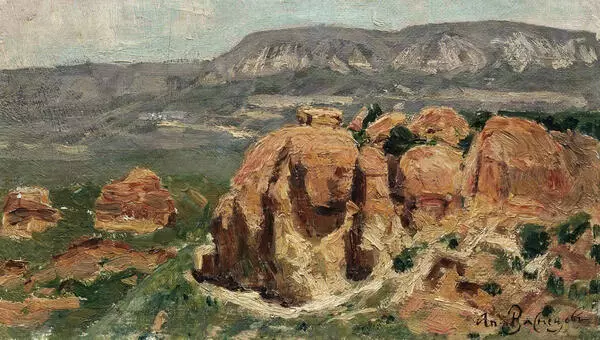ApollinAry VasnetsOv, VIktor VasnetsOv’s younger brother, was a painter as well as an art historian and scholar. His specialization was the architecture of ancient Moscow, to which he dedicated many of his paintings and works. In addition, Vasnetsov went down in the history of Russian painting as a master of the epic landscape, a genre that celebrated the nature of the Urals and Siberia. Pavel Tretyakov highly appreciated the landscapes and purchased them for his collection.
The artist was also an astronomy enthusiast. The artist was one of the founders of the Moscow Association of Astronomy Enthusiasts and an active member of it. In 1914, Apollinary Vasnetsov went to the Crimea to watch the full solar eclipse near FeodOsia, which made an indelible impression on him. Upon returning to Moscow, the artist created two paintings inspired by the eclipse. “Solar corOna” is one of them. The artist created a rather simple landscape, filling this unique natural phenomenon with symbolic meaning. The Sun is high in the sky, completely obscured by the moon. Sun rays form the shape of the corona.
Vasnetsov captured this moment in a state of active motion. We see dense dark clouds floating, rocks at the bottom of the painting are depicted as if they were watching this mysterious natural phenomenon. The restless sea with its weaves hitting the rocks harmonizes with the painting’s general composition. The symbolic meaning of the solar eclipse is very deep. For centuries, people saw this phenomenon as an omen. However, the artist adds a philosophical dimension to this disquieting scenery. The painting asserts the beauty and eternity of the ‘indifferent nature’.
The artwork is imbued with romanticism as well as the features of modernist art. Apollinary Vasnetsov was fond of philosophy and watched new Russian art blossom with interest. The large size and vertical arrangement of the composition, the combination of dark cold blue and light blue tones, create a special image of the natural phenomenon which is not usual for Vasnetsov’s work.
The artist was also an astronomy enthusiast. The artist was one of the founders of the Moscow Association of Astronomy Enthusiasts and an active member of it. In 1914, Apollinary Vasnetsov went to the Crimea to watch the full solar eclipse near FeodOsia, which made an indelible impression on him. Upon returning to Moscow, the artist created two paintings inspired by the eclipse. “Solar corOna” is one of them. The artist created a rather simple landscape, filling this unique natural phenomenon with symbolic meaning. The Sun is high in the sky, completely obscured by the moon. Sun rays form the shape of the corona.
Vasnetsov captured this moment in a state of active motion. We see dense dark clouds floating, rocks at the bottom of the painting are depicted as if they were watching this mysterious natural phenomenon. The restless sea with its weaves hitting the rocks harmonizes with the painting’s general composition. The symbolic meaning of the solar eclipse is very deep. For centuries, people saw this phenomenon as an omen. However, the artist adds a philosophical dimension to this disquieting scenery. The painting asserts the beauty and eternity of the ‘indifferent nature’.
The artwork is imbued with romanticism as well as the features of modernist art. Apollinary Vasnetsov was fond of philosophy and watched new Russian art blossom with interest. The large size and vertical arrangement of the composition, the combination of dark cold blue and light blue tones, create a special image of the natural phenomenon which is not usual for Vasnetsov’s work.
